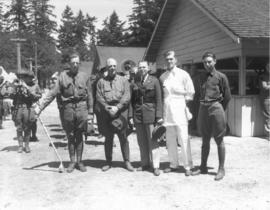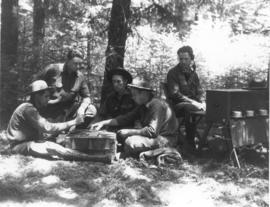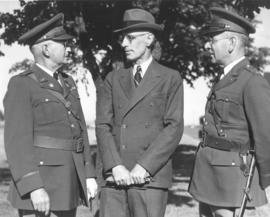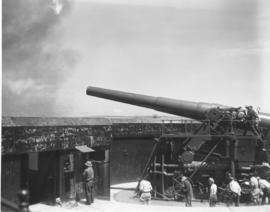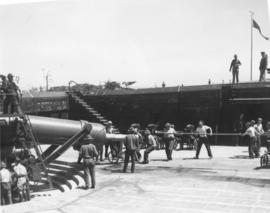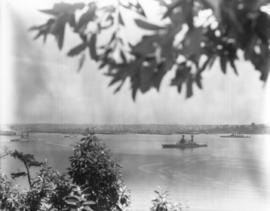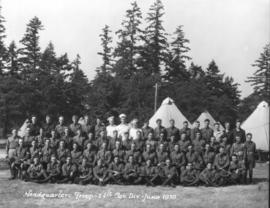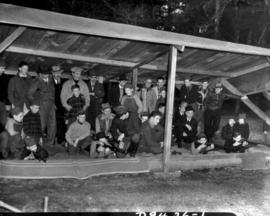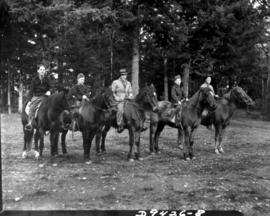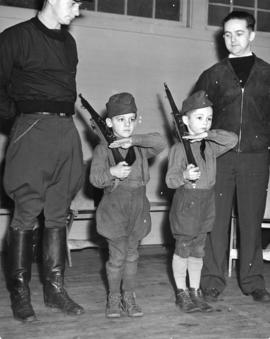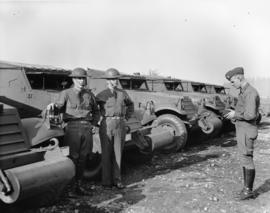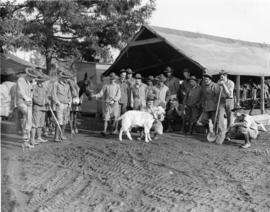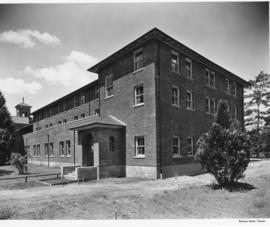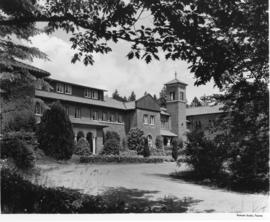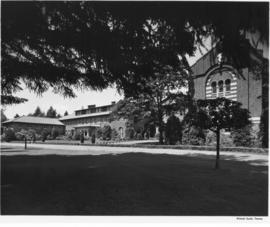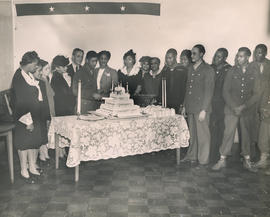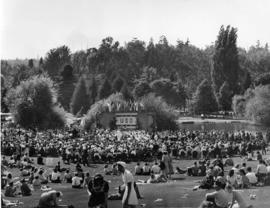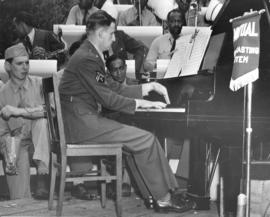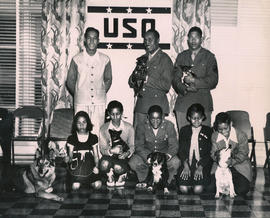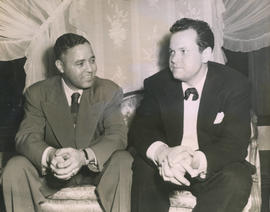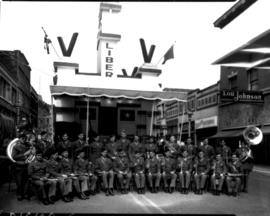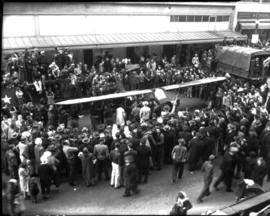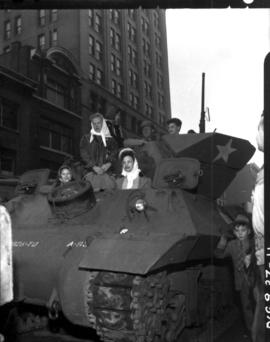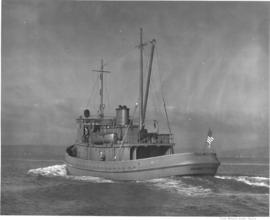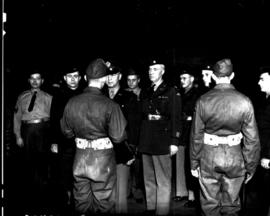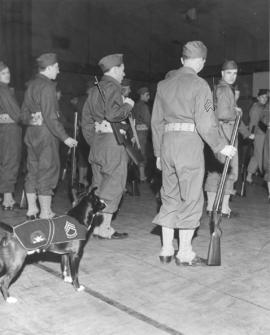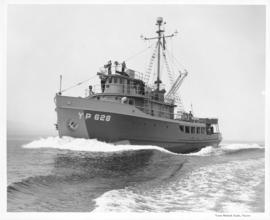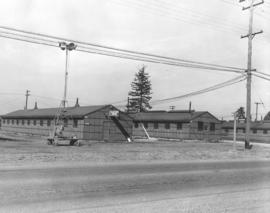Two small boys dressed in military outfits stood bearing arms under the watchful eye of two men, one in uniform, on Big Buddy Day, Feb.22,1940, at Marymount Military Academy. Marymount, a Catholic boys' school near Spanaway, was the only military school in the state of Washington and a charter member of the National Rifle Association. Big Buddy Day was an annual event where boys and men could participate in shooting, riding, swimming, basketball and exhibitions such as this one. Students ranged from preschool (age 6) to 9th grade. The school, which was run by the Dominican Sisters of Tacoma, was small, with an total enrollment that was usually under 100. The man in uniform at the far left is Jim Cashion, a Marine Reserve commanding officer employed by Marymount. The little soldier to the right is Robert H. Gilroy, Jr., with his father, Robert, Sr., behind him.
Marymount Military Academy (Spanaway); Private schools--Spanaway; Military education--Spanaway; Gilroy, Robert H.; Cashion, James;
